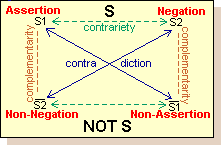
Having finished The Human Condition, we should again imagine how Arendt might have read/interpreted a viewpoint like Moravec's. One idea is that she would have read Mind Children as an example of, among other things (e.g. confusion), how, in the modern world, "thought became a function of the brain with the result that electronic instruments are found to fulfil functions [of thought] much better than we ever could."(322) Similarly, had she taken an interest in either Shannon's "A Mathematical Theory of Communication" or Turing's "Computing Machinery and Intelligence", I think it would have been as a symptom of the modern age rather than as a foundation for the "new and as yet unknown age."(6)
Perhaps the most striking contrast between Arendt and Hayles is the absence of either nostalgia or eulogy in the latter. Hayles does not ignore or trivialize the consequences of "how information lost its body," but she is interested in the birth of information theory as a transforming moment in history, and specifically in the history of how we (humans) think about and organize ourselves. The "posthuman" clearly represents the end of the "human", but How We Became Posthuman implies that there is no point in lamenting our alienation from older cultural concepts of the self or the world, because there is no going back.
But why was/is "information theory", and specifically the theory articulated by Shannon and developed so successfully, so significant (according to Hayles)? Let's begin at the beginning:
Hayle's How We Became Posthuman, Prologue
I do not wish to give the impression that I think there is no mystery about consciousness. There is, for instance, something of a paradox connected with any attempt to localise it. But I do not think these mysteries necessarily need to be solved before we can answer the question with which we are concerned in this paper.
A.M. Turing, "Computing Machinery and Intelligence" (1950)
Like The Human Condition, Hayles book begins referring to other authors and other works almost immediately, and this can make reading her work not only difficult but annoying when these references are unfamiliar. How do you read (through) a text like this? Is there an identifiable thesis in the Prologue and, if so, are the references meant to motivate or justify that thesis?
Clearly the works by Moravec and Turing are crucial to understanding Hayles' motivation, so let's start with them. Although every computer scientist working (or unemployed) today is familiar with Turing's name and some description of the "Turing Test," comparatively few have read the original 1950 paper. Hayles makes much of what has been noticed and ignored in in the tradition that derives from that paper, and so let's examine Hayles' take on the real significance of the Turing Test (pp. xiii-xiv). Questions:
How We Became Posthuman, chapter 1
We'll begin the discussion with Adam Stern's presentation/questions.
The "Semiotic Square" and Hayles' "The Semiotics of Virtuality"
The "semiotic square" was a creation of the famous semiotician A. J. Greimas, but anyone familiar with "logical squares" or "Latin squares" won't be surprised by the use of such a simple geometric structure to stimulate thinking. In chapter 10, Hayles uses the semiotic square to great effect in trying to expose some of the hidden connections and contrasts that come from thinking about the actual and the virtual. As an introduction to that chapter, we'll make a simple example of the usefulness/mechanism of the semiotic square. (For a very nice introduction to this and other fundamental notions in semiotics I recommend the online version of Daniel Chandler's Semiotics for Beginners. -- the image of the square, below, is part of his book).

Let's see how this works with an opposition that we've been discussing every since Moravec's Mind Children: Humans and Machines. We'll put the former in S1 and the latter in S2, and brainstorm a bit trying to fill out the Square with our discussions in mind.
For Wednesday:: Read chapters 10-11 in Hayles, and send your paper topic for Unit 1 to the CHV list.